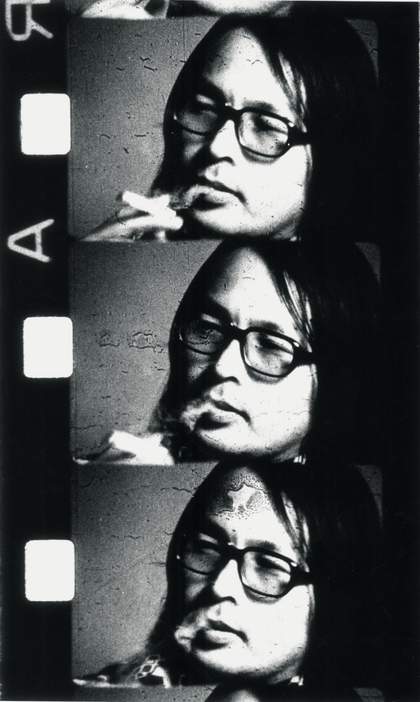Born 1932 in Nagoya, Japan. Lives and works in Tokyo.

Toshio Matsumoto
Courtesy the artist
Film director, video artist and film theoretician, Toshio Matsumoto was a pioneer of Japanese 1960s experimental cinema. Pursuing documentary filmmaking, he produced radical and provocative short and feature films, while at the same time theorising the documentary form in his critical writing. In the late 1950s, he collaborated with the collective Jikken Kobo (Experimental Workshop), soon integrating avant-garde elements into his documentary practice. In his influential essays and experimental films, Matsumoto developed in the 1960s what he coined ‘neo-documentarism’, an expressive type of documentary rejecting documentary’s traditional objective nature for one that would reveal internal mental states and subjectivities. Facing the contradictions of cultural and political systems of post-war Japanese society, Matsumoto appropriated television and journalistic media forms and images to reveal the manipulative forces behind them. From the 1970s, he increasingly experimented with video, using devices that alter images and colours, laying out the very processes of image manipulation.
This approach is illustrated in his short film Mona Lisa 1973, for which Toshio Matsumoto used an electric image synthesiser, generating psychedelic colour effects. Anticipating the travel to Japan of Leonardo da Vinci’s masterpiece in 1974, Matsumoto refers to the multiple reinterpretations and copies of the Mona Lisa throughout the history of art, notably those by Marcel Duchamp and Andy Warhol. Directly referencing the mass-reproduced icon but also her mythical mysterious inner life, he projects found images and abstract brightly coloured forms onto the image of the painting. At once the subject before a changing background and receptacle for the background image, the figure of Mona Lisa is the only fixed element against which a succession of constructed images are set. Applying a number of colour effects to the Mona Lisa, Matsumoto gradually produces multiple impressions, which seem echoed or provoked by the altering of images in the background. The original painting is transformed into a powerful surrealist and psychedelic vision, tinted by a certain anxiety of loss of control and enhanced by the musical track. Projecting his own fantasy onto the painting, Matsumoto confronts his subjectivity with the animated object, which acquires through this process a seemingly internal, active life.
Elsa Coustou
September 2015
